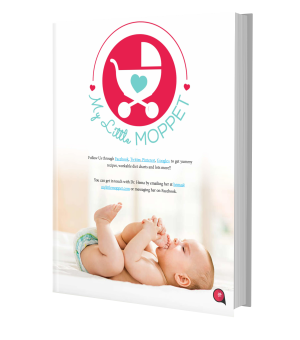Published: July 22, 2022 | Last Updated on: July 22, 2022 | by Hema
Here’s your ultimate guide to pregnancy exercise for normal delivery. Includes benefits, exercises, must haves, tips and more!
Jump To hide How your Body changes during Pregnancy The Ultimate Guide To Pregnancy Exercise for Normal Delivery Benefits of Pregnancy Exercise 1. Walking 2. Swimming 3. Kegels 4. Belly Breaths 5. Child’s Pose 6. Cat-Cow 7. Wall Slide 8. Deep Squat 9. Hip Raises 10. Glute Presses 11. Clamshell 12. Gym Ball Walk Outs 13. Bicep Curls 14. Hip Flexor Stretch 15. Butterfly Pose 16. Lying Cobbler Pose 17. Wide Legged Squat 18. Downward Dog Pose 19. Pelvic Stretch 20. Extended Triangle Pose Do’s and Don’ts for Pregnancy Exercise for Normal Delivery Do: Don’t: Essential Must Haves for Pregnancy Exercise for Normal Delivery Buy Healthy Nutritious Baby, Toddler food made by our own Doctor Mom !Most people of the older generation will wince at the thought of exercising during pregnancy, thinking it will risk the health of the baby and mother. However, today’s Moms are smart and know better, thankfully! They are aware that some amount of physical activity during pregnancy is not just safe, but also helpful to have a normal delivery.
So, can you just continue your existing exercise routine into pregnancy as well? Well, that depends upon the workout you have been doing so far, but the short answer is ‘No’. When you get pregnant, your body changes significantly, and your exercise routine needs to be adjusted to adapt to your newly pregnant body. To make those modifications, you first need to understand how your body changes as you progress through pregnancy.


How your Body changes during Pregnancy

1. As your baby grows and your abdomen expands, your center of gravity shifts, causing a change in your posture, balance and coordination
2. Many muscles start relaxing and loosening up to accommodate the growing fetus
3. Pregnancy hormones also cause the ligaments to relax in preparation for child birth, which can result in loose joints that feel unstable
4. The increased weight in your abdominal area puts extra pressure on your pelvis and lower back
5. When you’re pregnant, a good amount of oxygen is directed towards the fetus, leaving less for you and lowering your ability do strenuous workouts
As a result of these changes, you are more prone to falls, pain and other forms of discomfort. You can prevent these by stopping some intense workouts, while including other exercises that’ll be less stressful for your body and will also strengthen it for normal delivery.
The American College of Obstetrics and Gynecology recommends that healthy pregnant women make time for at least 150 minutes of moderate exercise per week. This can be divided into 30 minutes for 5 days a week or into three 10-minute bursts throughout the day for 5 days a week.
If you need help starting an exercise program and are at a complete loss about which ones are safe for you, don’t worry! We’re here with the ultimate guide to pregnancy exercise for normal delivery that includes workouts that are suitable even for beginners.
Important: Be sure to get the green signal from your doctor before beginning any exercise program, and follow their instructions when doing the workouts.
The Ultimate Guide To Pregnancy Exercise for Normal Delivery
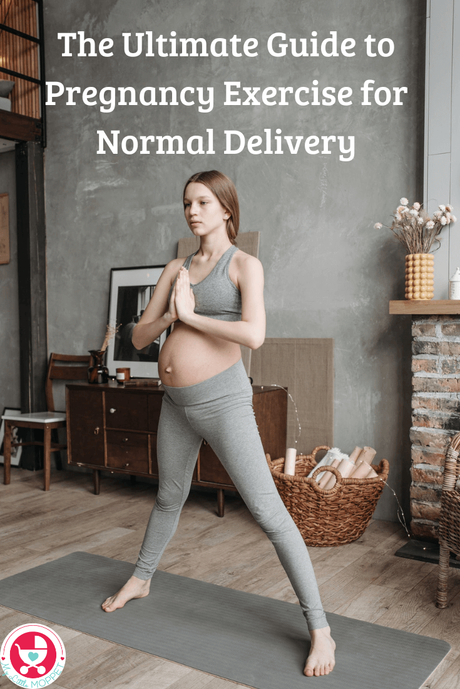
Benefits of Pregnancy Exercise
- Improves the likelihood of having a vaginal birth
- Prevents and relieves back pain
- Improves blood circulation and heart health
- Lowers the risk of gestational diabetes, hypertension and pre-eclampsia
- Helps carry the baby to term
- Strengthens and lengthens muscles in the pelvis
- Improves balance and posture
- Prevents falls and general clumsiness
- Eases the body into a position for a vaginal birth
- Prevents urinary incontinence
- Eases constipation and activates the digestive tract
- Increases the chances of a faster, smoother delivery
- Lowers labor pain to a certain extent
- Prevents excess weight gain
- Helps losing the baby weight faster
- Hastens recovery after delivery
Now that we know how pregnancy exercise for normal delivery works and is beneficial, it’s time to actually get into the workout! When we think of exercise, you often think of someone who’s run several kilometers, out of breath and dripping with sweat. However, pregnancy exercise is a little different, but we promise that the resultant endorphin high will be the same!

Before we get into the actual workout, it’s important to warm up first. Warming up slowly increases your body temperature and preps your body systems for activity. It prevents muscle soreness and injuries, especially if you spend most of your time sitting or lying down. Here is a quick warm up routine you can follow, starting from a simple standing position. Make sure your feet are shoulder width apart, back is straight and shoulders are down before you start.
- Tilt your head to the left shoulder and then to the right, 10 times.
- Move your head up and down, 10 times.
- Moving clockwise, move your head in a circle, 5 times.
- Repeat the above step, this time moving anti-clockwise, 5 times.
- Stretch out your arms at shoulder height and move them in clockwise circles, 10 times.
- Repeat the above step, moving anti-clockwise, 10 times.
- Put down your arms and roll your shoulders clockwise, 10 times.
- Now roll your shoulders anti-clockwise, 10 times.
- Put your hands on your waist and stretch to the right and then to the left, 10 times.
- Come to standing position and stretch back as far as you can comfortably go. Hold for 30 seconds.
You are now warm and ready to workout! Choose from any of the activities below, depending upon how they fit into your current lifestyle. You can also create a weekly routine mixing things up so you don’t get bored.
1. Walking

Walking is one workout everyone can do – all you need is a place to walk and suitable shoes. Walking is a low-impact activity that can be personalized – you can take up the speed a notch if you’re already a fit person. Walking lowers blood pressure and blood sugar, improves digestion and also relieves stress.
If the weather allows, nothing beats a good walk in the outdoors, breathing in the fresh air. However, if that’s not an option for you, you can simply walk around your house or your apartment building. Many women like a brisk walk in the morning before starting the day and a more leisurely stroll at night. It can also be a bonding activity to do with your partner or your kids.
2. Swimming

Swimming is one of the safest exercises for pregnant women, considering how easy it is on the joints and how the water helps balance the weight of the body. Swimming is particularly helpful for women into their third trimester, since it provides relief for back pain and provides an alternative when walking or other exercises become difficult due to the increased weight.
Another advantage of swimming is that it strengthens the entire body, particularly the lower body, which plays a big role when it comes to childbirth making it a top choice as a pregnancy exercise for normal delivery.
3. Kegels

Kegels is an important exercise for women in any stage of their lives, but particularly for pregnant women since it helps strengthen the pelvic floor muscles. These are a group of muscles that connect the tailbone, pubic bone and sit bones. They form a bowl-like shape at the base of the pelvis and support the uterus, bladder and other pelvic organs.
The pelvic floor muscles are responsible for keeping the pelvis stable and strong, and encouraging a smooth vaginal birth. If the pelvic floor is weak, it can cause issues ranging from urine incontinence to serious problems like prolapse, where the uterus falls out of its position. Doing Kegels regularly can prevent this from happening.
Sit on an exercise ball with your back straight and legs balanced. Now imagine that you’re trying to stop the flow of urine. Make sure your abdomen, thighs and buttocks are relaxed while you do this – this way you will ensure that you are using the right muscles.
Contract the pelvic floor muscles and hold for a short while, starting from 3 seconds and going up to 10 seconds. Relax and repeat up to 10 times. Keep checking to see that you are not using the muscles in the abdomen or legs to keep the focus on your pelvic floor. This is best done in the first trimester to ensure you get the most out of the exercise by the time your due date arrives.
4. Belly Breaths

Belly breaths are something you can do at any time of the day, and is a great way to relax before bed. It improves the supply of oxygen into the body, and helps you improve your focus on your breathing – something that is very useful when it comes to a vaginal birth.
Start by sitting on a chair or on the floor, with your back straight and shoulders down. Place one hand on your belly and the other on your chest. Close your eyes. Take a deep, slow inhalation through the nose. Follow this by a slow exhalation through the mouth. Repeat this 20-30 times. Don’t breathe too fast as it may result in hyperventilation.
5. Child’s Pose

Child’s pose is one of the most restorative poses you can do, and it is a great stress-reliever in all the three trimesters. It also lengthens the muscles of the pelvic floor, increases the chances for a vaginal birth. Have a soft, padded foam yoga mat for comfort.
Sit down with your buttocks resting on your heels. Keep your knees as wide as the yoga mat with the big toes of both feet touching. Keeping everything as it is, lean forward from your hips, extending your arms in front of you. Rest your forehead and your palms on the floor. If you can’t reach the floor, place a yoga block or pillow for your forehead to rest on. Stay in the pose for as long as you want, breathing normally.
6. Cat-Cow
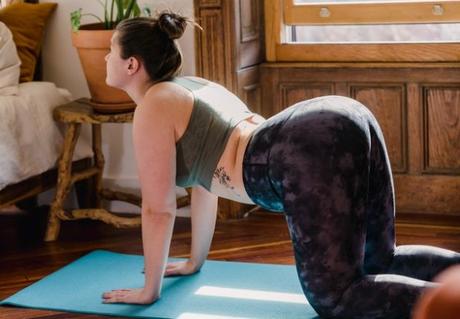
This is another great pick for pregnancy exercise for normal delivery and is excellent for relieving lower back pain. It also strengthens the back and shoulders, which you’re going to need to carry your baby around later! To start this pose, get down on your hands and knees. Make sure your wrists are directly under the shoulders and the knees are under the hips.
With an exhalation, round your back and tuck your chin into your chest. Focus on rounding the lower back too. Then inhale as you push your belly towards the floor, arching your back and lifting your head. Keep your shoulders drawn back and try to look up as much as you can. Repeat for as many times as you like.
7. Wall Slide

As you proceed through the second trimester, your abdomen starts to increase in size, and you may begin to experience back aches. The wall slide helps to strengthen and stabilize the back and also improve your posture as your center of gravity shifts. This exercise works best with an exercise ball, but you can also do without.
Stand straight with the ball between your back and the wall, shoulders down and feet shoulder width apart. Bring your feet to the front. Now bend your knees and lower yourself as if you are sitting on a chair, till your thighs are parallel to the floor. Make sure the ball doesn’t fall down.
8. Deep Squat

Deep squats are among the difficult ones in this guide to pregnancy exercise for normal delivery, but they’re worth the effort! A deep squat lengthens the muscles of the pelvic floor, stretching the perineum and making it easier to have a vaginal birth. It helps the birth canal open up a little more, easing labor pains.
Start by standing with legs wider than your hip width. Push your hips back and lower yourself, bending your knees, going down as far as you can go. Clasp your hands together to help center yourself and make sure you are well balanced on your entire feet and not tip toeing. Don’t let your knees collapse inward – this means your form is not correct.
9. Hip Raises

Your hips are going to go through a lot during these nine months, which is why they should be an important point of consideration when planning a routine for pregnancy exercise for normal delivery. Hip raises are a great exercise to try in the first trimester and in the second too, if you can. They strengthen the lower back and eases childbirth.
Lie down on a yoga mat with knees bent and feet flat on the floor. Keep your arms extended close to your body. Now lift your hips off the floor, balancing your weight on your shoulders and feet. There should be a straight line from your chest to your knees. Hold for a couple of seconds and lower your hips to the ground. Repeat 5 times for a set.
10. Glute Presses
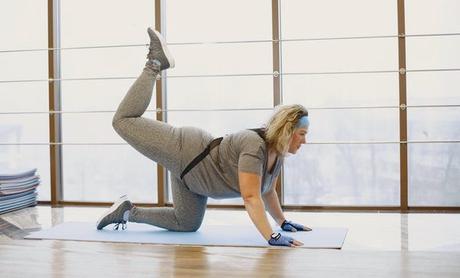
Strengthening your posterior chain is important when doing pregnancy exercise for normal delivery, and the glutes are part of what support your baby’s weight. They also ensure you don’t lose your balance or ruin your posture even as your center of gravity shifts when you get bigger.
Start in a table top position, balancing on your knees and hands. Ensure the wrists are below the shoulders and the knees are under the hips. Keeping the back straight and core tight, lift one leg up, pressing the foot upwards towards the ceiling. Return the foot to the starting position and repeat with the opposite leg. As you lift each leg, make sure you contract your gluteal muscles.
11. Clamshell

This strangely-named exercise is a great one to do in the first two trimesters, and is perfect for ensuring a normal delivery. This exercise targets muscles in many body parts – abs, buttocks, thighs and the all-important pelvic floor.
Start by lying on your side. Use a wedge pillow or regular pillow to keep your upper body including the heart above the level of your abdomen. Keep your knees bent so your thighs are perpendicular to the rest of your body. Let the heels rest one on top of the other.
Keeping your heels pressed together, lift the upper knee as high as it’ll go. Hold for a second and return to the starting position. Repeat 5 times and then turn over to the other side and repeat. As your abdomen gets bigger, you may find it easier to do this with your back resting against the wall.
12. Gym Ball Walk Outs
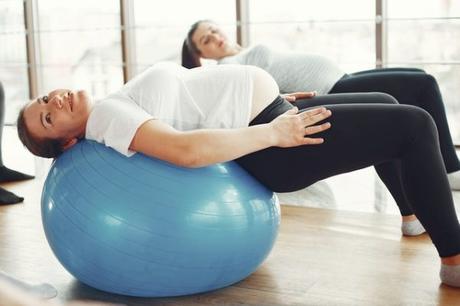
This is a fun workout to do with a gym ball, but it requires a bit of practice, so if you don’t feel confident about it, you may skip it completely. It helps improve mobility and flexibility while also building strength in the back muscles.
Start by sitting on the ball with feet flat on the floor. Walk your feet slowly in front, gradually sliding your glutes off the ball till your upper back is nicely nestled on the ball. You can stop at this point or go further by including hip thrusts. Place your hands on the ball for balance and then lower your hips but don’t let them touch the floor. Now lift your hips up and then lower them again. Repeat 10 times for 1 set.
13. Bicep Curls

This is a classic exercise that’ll help get your arms and shoulders strong enough to carry a baby, a diaper bag and your handbag with ease! This is an easy pregnancy exercise for normal delivery that requires a pair of dumbbells. Get a weight that you can lift but will pose a challenge after doing some reps.
Stand with your feet hip-width apart and back straight. Let your knees be straight but not locked. Hold a dumbbell in either hand, with palms facing forward. Exhale as you lift your fore arms, bending at the elbows and keeping your upper arms in the same position. Lift the dumbbells towards your shoulders and then inhale as you bring them down.
When doing this exercise, make sure your wrists are flat throughout and that your biceps are doing all the work. When bringing the dumbbells down, don’t drop them or let gravity do the work – bring them down with control. Avoid swinging the dumbbells – focus on form rather than speed.
14. Hip Flexor Stretch

The hip flexors are a group of muscles lying in the front of the pelvis, and these are often short, due to our sedentary lifestyles that require us to sit all day. It can be worse in pregnant women whose growing bellies push their weight forward. Stretching and lengthening the hip flexors increase your chances of having a vaginal birth and an easier one too.
Kneel down on the floor with your body lifted, so that there is a straight line from your head to your knees. Now keeping the right knee planted on the floor, lift the left knee and place the left foot on the floor in front of you. You should be balanced on your right knee and left foot. There should be a straight line from your head to your right knee.
Standing tall with your shoulders down, place your hands on your hips and lean towards the left foot, keeping your back straight. You should feel a stretch in the front of the right thigh and hip. Hold for 3o seconds, then release and repeat on the other side. This exercise is good for the first two trimesters, but may be difficult for the third trimester.
15. Butterfly Pose

This is a must do pregnancy exercise for normal delivery, and if you were to pick just one in this list, let the butterfly pose be it! This pose is known for being great for reproductive health in general, and it is particularly helpful in stretching and strengthening the muscles in the pelvis, thighs and lower back, all of which make childbirth easier.
Sit on a mat till you are comfortable. If you find it hard to keep your back straight, sit on a folded towel or cushion. Now bring the soles of your feet together. Hold on to the feet to help stabilize yourself. Stretch your thighs, trying to lower your knees to the floor as much as you can. If possible, lean forward, keeping your back straight. Hold for a few seconds before returning to starting position.
16. Lying Cobbler Pose

The lying cobbler pose is similar to the butterfly pose, only this one is done lying done and is a more restorative pose. It has the same benefits of butterfly pose with added relaxation. It is a great pick to do when you’re feeling stressed and need to calm down.
Lie down on the floor so your back is flat against the floor and your legs are stretched out. Bend your knees outwards and bring the soles of the feet together. Gently stretch the thighs to help the knees come as close to the ground as possible. Rest your hands either on the thighs or the abdomen. Close your eyes and breathe deeply.
17. Wide Legged Squat
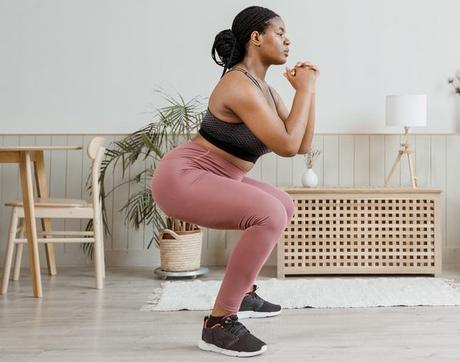
If you found the deep squat too hard, the wide legged squat is a good alternative to add to this guide for pregnancy exercise for normal delivery. What’s more, this is suitable for all the trimesters, so you should be able to do it even as you head towards your due date.
Start by standing with your feet wide apart, about two times shoulder width. Make sure you are able to balance yourself. Now inhale and lower yourself as if you’re sitting in a chair. Go only as far as you can go, but you should still feel the stretch in your groin area and thighs. Hold the position for a few seconds and then lift yourself up, and bring your feet together. Repeat, trying to sit deeper each time.
18. Downward Dog Pose
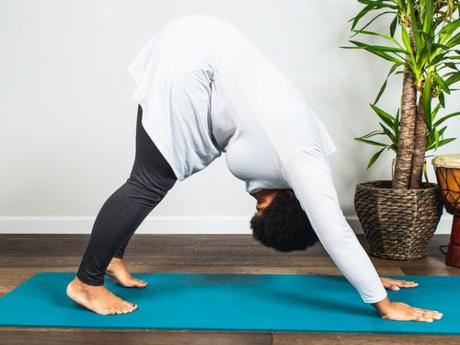
The downward dog pose is a popular one in yoga, and depending upon your fitness level, it can be an energizing or restorative pose. When it comes to pregnancy exercise for normal delivery, the downward position helps the baby get into the right birthing position.
To do the downward dog pose, get down on your hands and knees, with wrists resting below the shoulders and the knees directly under the hips. Pushing the weight of your upper body on to your hands, lift your knees and extend your legs fully, so that your feet are flat on the ground. If you can’t rest your heels on the ground, bend your knees a little. Extend your legs and elongate your back slowly till your body forms an inverted ‘V’ shape.
19. Pelvic Stretch
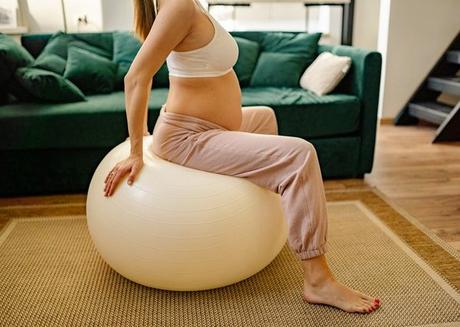
If you have an exercise ball at home, then this pelvic stretch is a must do pregnancy exercise for normal delivery. As the name suggests, the exercise stretches out the pelvic floor muscles and the groin, and helps your body adapt better to the position required for a vaginal birth.
Start by sitting comfortably on an exercise ball. Keep your back straight and your feet flat on the ground a little more than shoulder width apart. ‘Roll’ your pelvis on the ball by moving it forward and back in small motions. Do this 20 times for one set. If you can’t sit on the ball comfortably, you can ask someone to hold the ball to stabilize it.
20. Extended Triangle Pose

The triangle pose is a popular yoga pose, and it is particularly good for those looking for a pregnancy exercise for normal delivery. The pose stretches out the hips and groin muscles, which are essential for childbirth. It also provides a good stretch for the back and hamstrings, relieving pain.
Stand with your feet 3-4 feet apart, depending upon your height. Turn the right foot in lightly and turn the left foot out by 90 degrees. Both heels should be in one line. Lift both arms till they are parallel to the floor and direct your torso towards the front. Now bend from the hips to the left, so the left hand reaches the left foot or shin. If you can take the hand to the floor, do it, else leave it where it is. Let the right hand be raised straight up. Hold the pose for up to 30 seconds and then come up and repeat on the other side.
While these pregnancy exercises increase your chances for a normal delivery, no one can predict a 100% chance of a vaginal birth. Whether you will have a normal delivery or not depends upon many factors like these:
- Having a vaginal birth in previous pregnancies
- Being of a healthy BMI and normal height
- Chronic health conditions like hypertension, diabetes, asthma etc.
- Physical fitness
- Complications in pregnancy
Do’s and Don’ts for Pregnancy Exercise for Normal Delivery

Do:
- Get the green signal from your doctor before starting any exercise program
- Start with low intensity workouts, especially if exercising for the first time
- Warm up with stretches first
- Wait at least 1 hour after a meal before exercising
- Work out on a flat, even surface
- Exercise in loose clothes that allow enough circulation
- Wear proper shoes meant for the activity
- Workout in a room that is neither too hot nor too cold
- Hydrate before, during and after excercise
Don’t:
- Exert yourself unnecessarily
- Continue exercising if you feel nauseous or dizzy
- Stand for long periods of time
- Get up suddenly from the floor or a chair
- Hold your breath during any exercise
- Engage in activities that include jumping, bouncing, skipping etc
- Play contact sports of any kind
- Do exercises that involve sudden, jerky movements
- Lie flat on the back in the third trimester
- Do exercises that work the abdomen like crunches and twists
- Lift heavy weights
Essential Must Haves for Pregnancy Exercise for Normal Delivery

To ensure you stay safe as you perform your pregnancy exercises, you need to have a few essentials:
- Proper shoes that are designed for the activity you are about to do
- Stretchable pants that will move with you and not restrict movement
- Pregnancy sports bra that offers sufficient support
- Belly band for additional support for your growing abdomen
- Yoga mat made of a thick, soft material for comfort
- Yoga blocks made of a soft material like foam
- Yoga strap to get a good stretch without exerting your limbs too much
- Gym ball to add a different dimension to your regular exercises
- Prenatal wedge to raise your heart above your belly for floor exercises
- Light weights that are suited to your fitness level
Please remember that when you do pregnancy exercise for normal delivery, it increases your chances for a vaginal birth, but does not guarantee it. Always remember that feeling any pain isn’t normal and you should stop whenever you feel out of breath, dizzy, nauseous or as if you might lose your balance. You should not exercise if you have any of these conditions:
- Hypertension or heart disease
- Diabetes
- Asthma
- A weak cervix
- A history of miscarriage or preterm delivery
- Low lying placenta
You should stop exercising immediately if you feel fatigue, experience shortness of breath, contractions or notice any bleeding or spotting. In any of these conditions, you should see your doctor right away.

References:
American College of Obstetricians and Gynecologists
U.S. Department of Health and Human Services
Centers for Disease Control and Prevention (CDC)
National Health Services (NHS)
Buy Healthy Nutritious Baby, Toddler food made by our own Doctor Mom !
Shop now!You may also like
- The Ultimate Guide to Healthy Weight Gain in Babies – and…

- High Chair or Booster Seat? Or a combination? Your Ultimate…

- Are teethers for babies safe? Your Ultimate Guide to Baby…

- What You Need To Know About Postnatal Diet: 15 Foods to Eat…

- Adapting to the New Normal during COVID-19

- Speech Development in Babies - What's Normal and What's Not

Filed Under: Uncategorized
